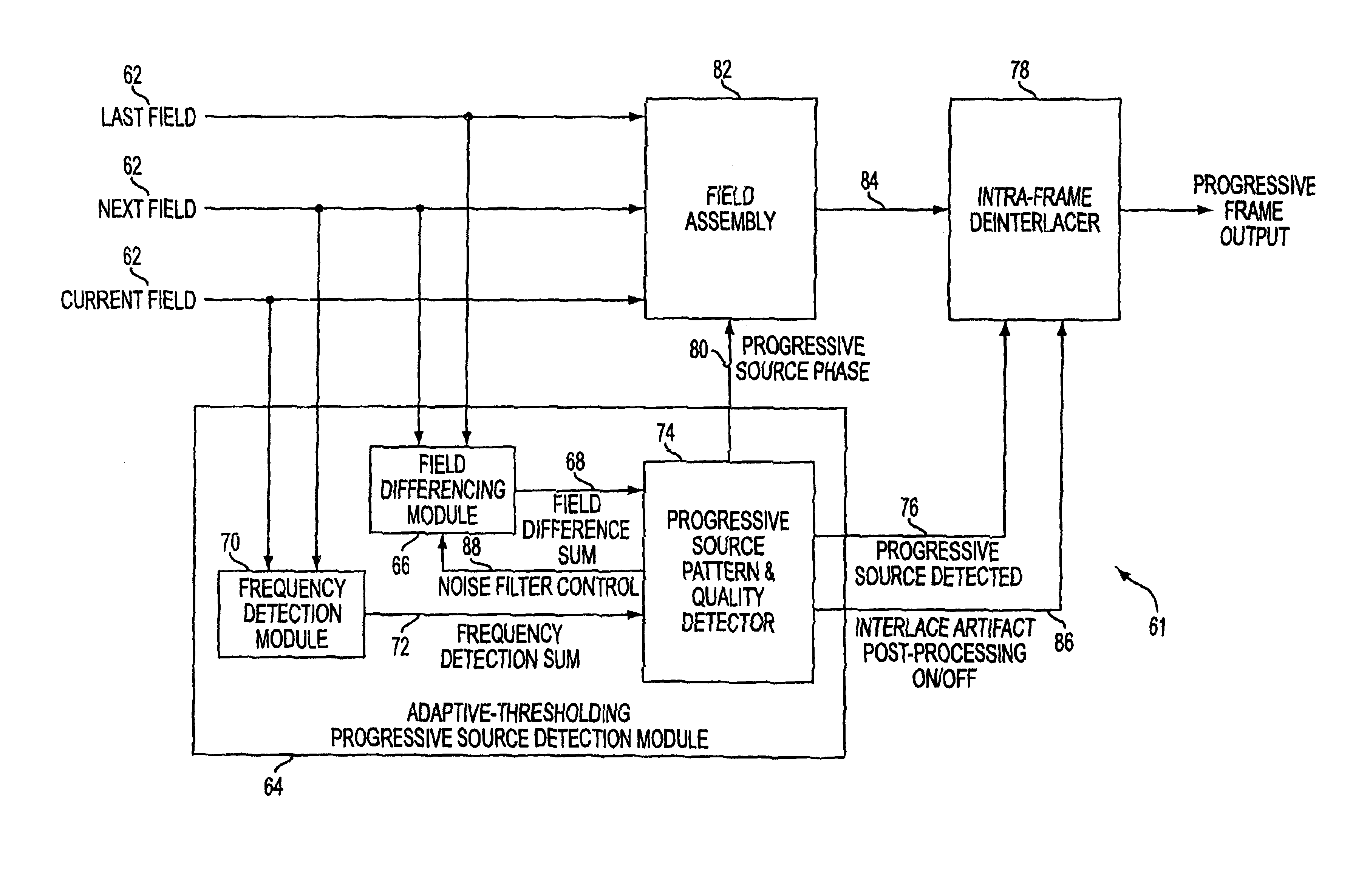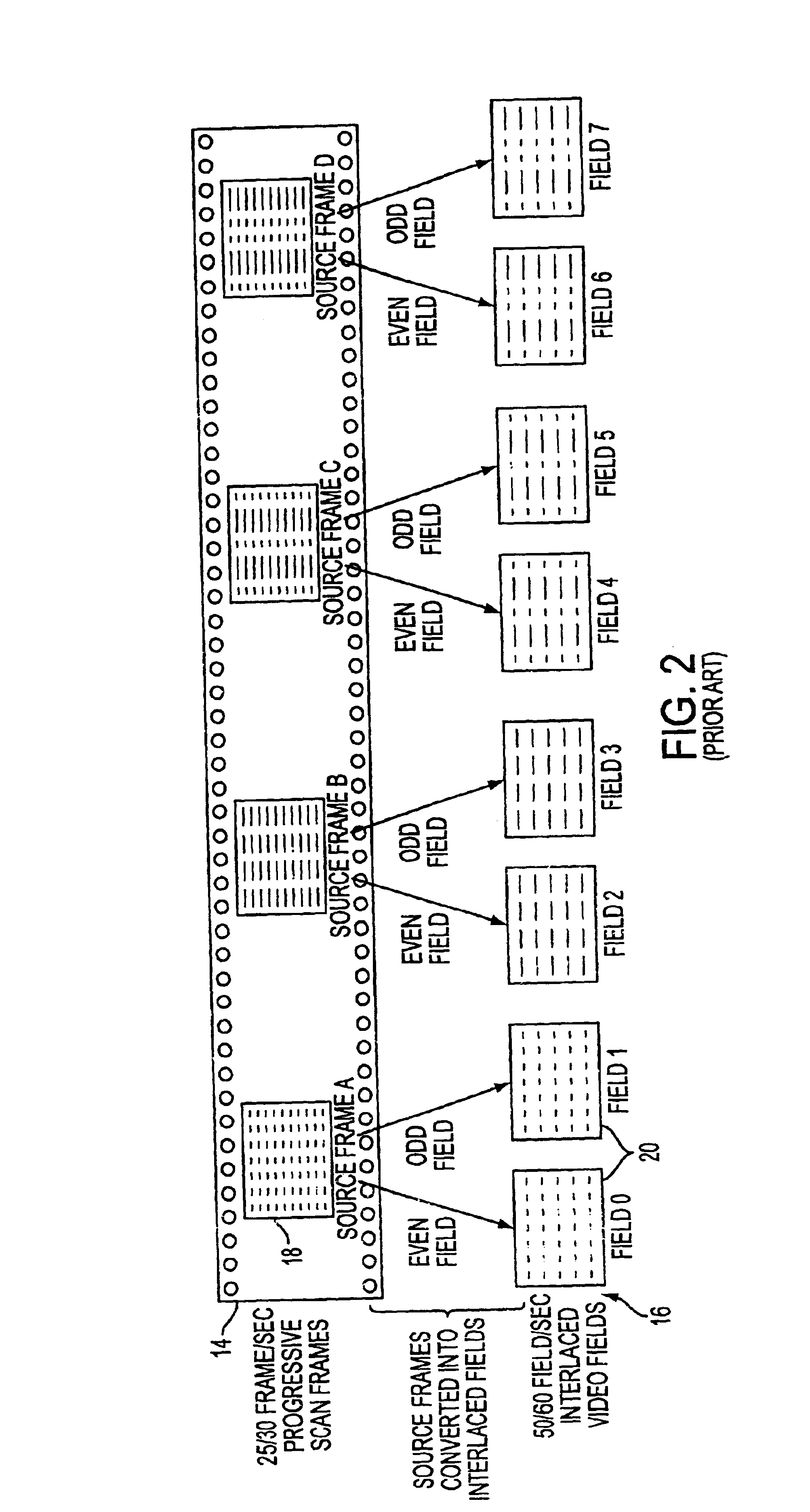Method, system and article of manufacture for identifying the source type and quality level of a video sequence
a video sequence and source type technology, applied in the field of video image processing, can solve the problems of no longer yielding such a low value, the method described above suffers from a number of problems when used with imperfect real-world sources, and the number of objectionable artifacts, etc., to achieve the effect of reducing the number of motion artifacts in video images
- Summary
- Abstract
- Description
- Claims
- Application Information
AI Technical Summary
Benefits of technology
Problems solved by technology
Method used
Image
Examples
Embodiment Construction
f a 2:2 pulldown video source by a vertical high-frequency detection technique;
[0032]FIG. 5 illustrates the prior art behavior of a fixed threshold detection scheme for a well-behaved 3:2 pulldown video source;
[0033]FIG. 6 illustrates the prior art behavior of a fixed threshold detection scheme for a poorly-behaved 3:2 pulldown video source;
[0034]FIG. 7 is a block diagram of the source detector of the present invention;
[0035]FIG. 8 illustrates the analysis of a 3:2 pulldown video source by a vertical high-frequency detection technique of the present invention;
[0036]FIG. 9 illustrates the behavior of the adaptive threshold detection scheme of the present invention for a poorly-behaved 3:2 detection video source;
[0037]FIG. 10 illustrates the analysis of a 3:2 pulldown video source by a field differencing technique of the present invention which also includes analysis of field difference pair values; and
[0038]FIG. 11 illustrates the analysis of a transition between a 3:2 pulldown video...
PUM
 Login to View More
Login to View More Abstract
Description
Claims
Application Information
 Login to View More
Login to View More - R&D
- Intellectual Property
- Life Sciences
- Materials
- Tech Scout
- Unparalleled Data Quality
- Higher Quality Content
- 60% Fewer Hallucinations
Browse by: Latest US Patents, China's latest patents, Technical Efficacy Thesaurus, Application Domain, Technology Topic, Popular Technical Reports.
© 2025 PatSnap. All rights reserved.Legal|Privacy policy|Modern Slavery Act Transparency Statement|Sitemap|About US| Contact US: help@patsnap.com



